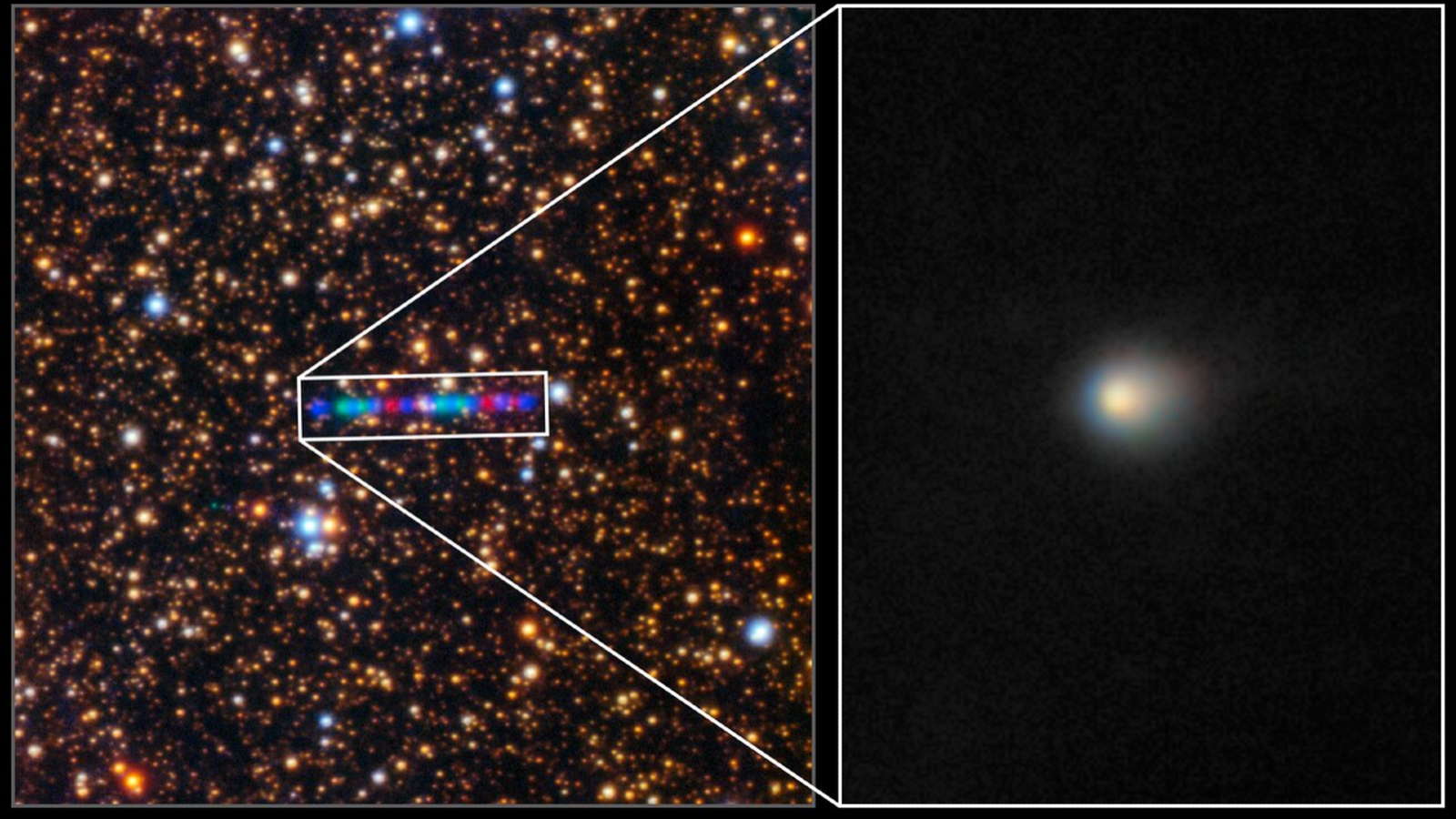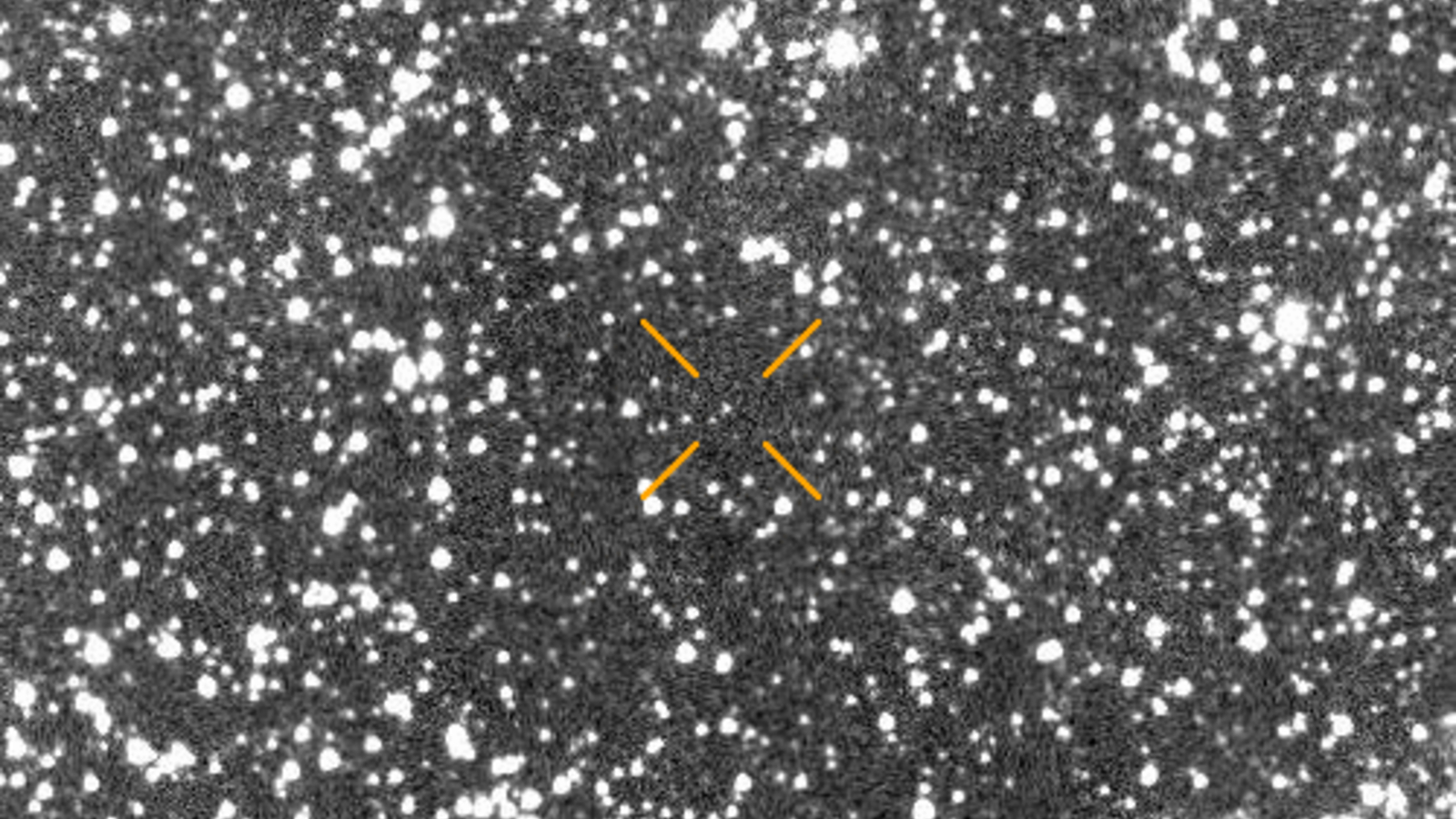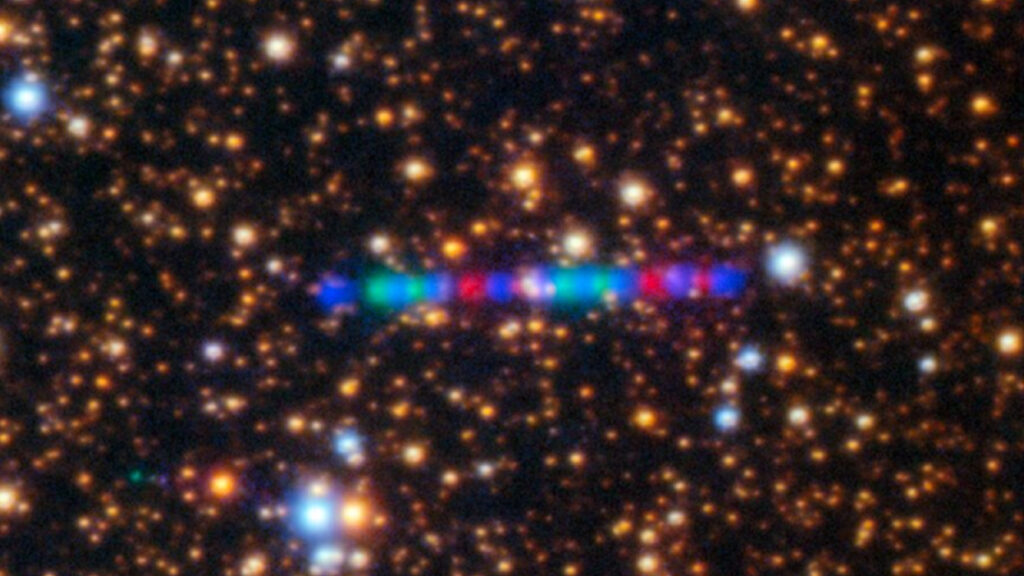The newly discovered “interstellar visitor” 3I/ATLAS can be seen shining like a rainbow-colored string of cosmic pearls in a trippy new timelapse image captured by a telescope in Hawaii.
The interloper was discovered on July 1, and within 24 hours NASA confirmed it was an interstellar object — an ejected piece of an alien star system that is shooting through our cosmic neighborhood. It is only the third object of its kind ever spotted, and is most likely a large comet, stretching up to 15 miles (24 kilometers) across.
Initial observations also suggest that it could be up to 3 billion years older than the solar system, potentially making it the oldest comet ever seen.
The extrasolar entity is hurtling toward the sun at more than 130,000 mph (210,000 km/h). It will reach its closest point to our home star, or perihelion, in late October, before beginning its long journey back out of the solar system. Therefore, scientists only have a limited time to study the object before it is gone forever.
Astronomers at the Gemini North telescope, located on the summit of Hawaii’s Mauna Kea volcano, have been closely watching 3I/ATLAS since its discovery. And on Tuesday (July 15), they released several stunning images, including a close-up shot of the comet’s coma — the cloud of ice, gas and dust that surrounds a comet’s icy shell — and a technicolor timelapse photo of the interloper moving through space.
Related: Watch newly discovered ‘interstellar visitor’ 3I/ATLAS shoot toward us in first livestream

The timelapse photo is a combination of at least 16 different photos taken using three different filters, making the comet appear to shift between blue, red and green hues as it moves across the sky. In reality, the comet gives off a white light, as seen in the coma photo.
The photos have helped provide astronomers with “critical early characterization of this interstellar wanderer,” Martin Still, the National Science Foundation program director for the International Gemini Observatory, which includes Gemini North and its sister telescope, Gemini South, in the Chilean Andes, said in a statement. “We look forward to a bounty of new data and insights as this object warms itself on sunlight before continuing its cold, dark journey between the stars.”
3I/ATLAS
Until now, only two other interstellar objects have ever been confirmed: 1I/’Oumuamua, an unusual asteroid discovered in 2017; and 2I/Borisov, a pristine comet spotted in 2019. However, researchers suspect that many more alien interlopers have passed through the solar system unnoticed.
3I/ATLAS is significantly larger than its predecessors and is traveling at a much faster rate. It also originates from a completely different part of the Milky Way than ‘Oumuamua or Comet Borisov, making it an intriguing target for future study.

Astronomers hope to be able to learn more about the comet’s exact origins as the sun starts to melt away its outer icy layers over the coming months, potentially unleashing a gigantic cometary tail that can be studied in great detail by space assets, such as the James Webb Space Telescope.
3I/ATLAS will make its closest approach to Earth in mid-December, after temporarily disappearing behind the sun in October and November. Its minimum distance from our planet will be around 1.6 times the distance between Earth and the sun, meaning that it “poses no threat” to us, according to NASA.
It will remain too distant to be seen by the naked eye, but it is expected to brighten to the point where it can be seen with a decent backyard telescope or pair of stargazing binoculars. The best time to see it for yourself will likely be in early 2026.
